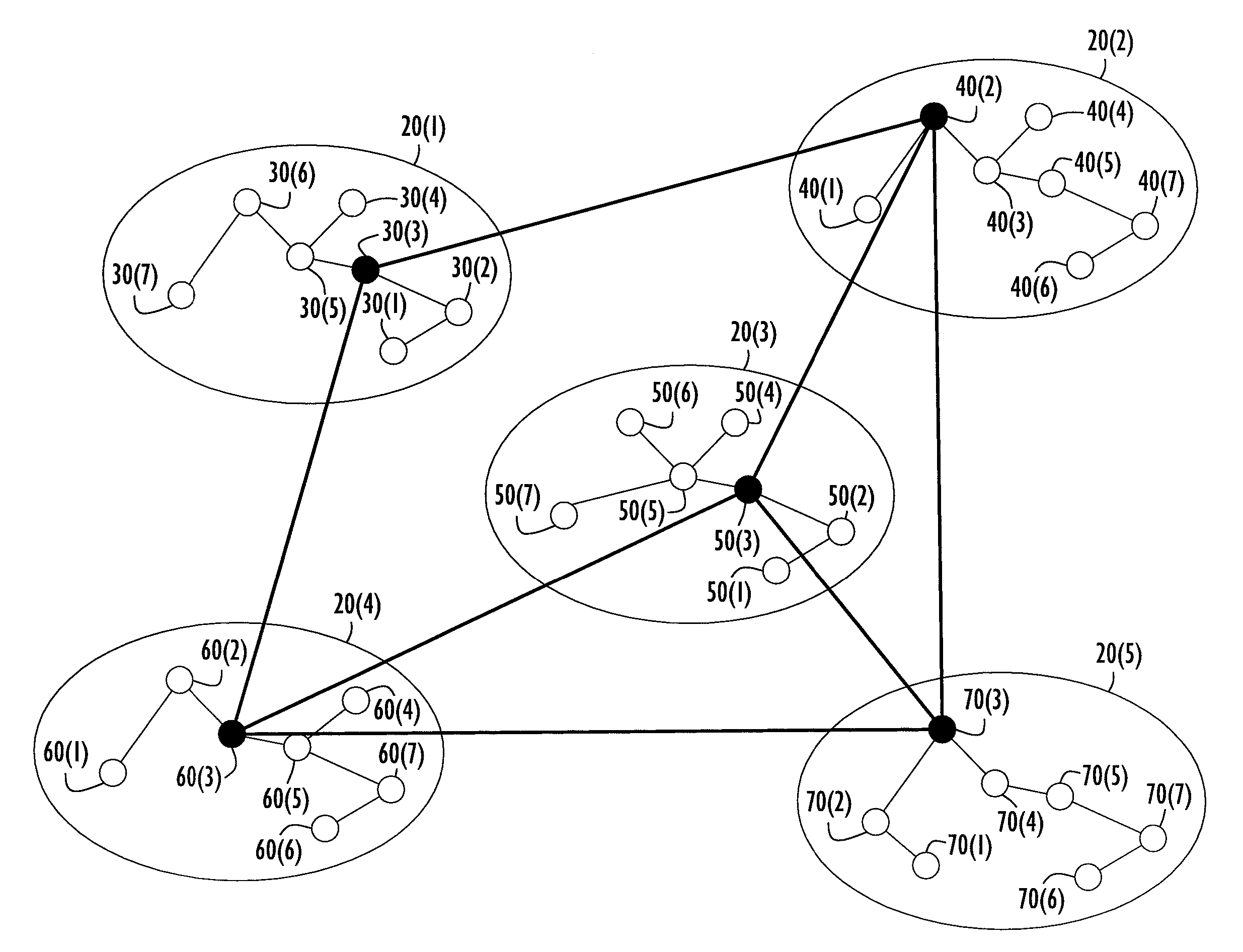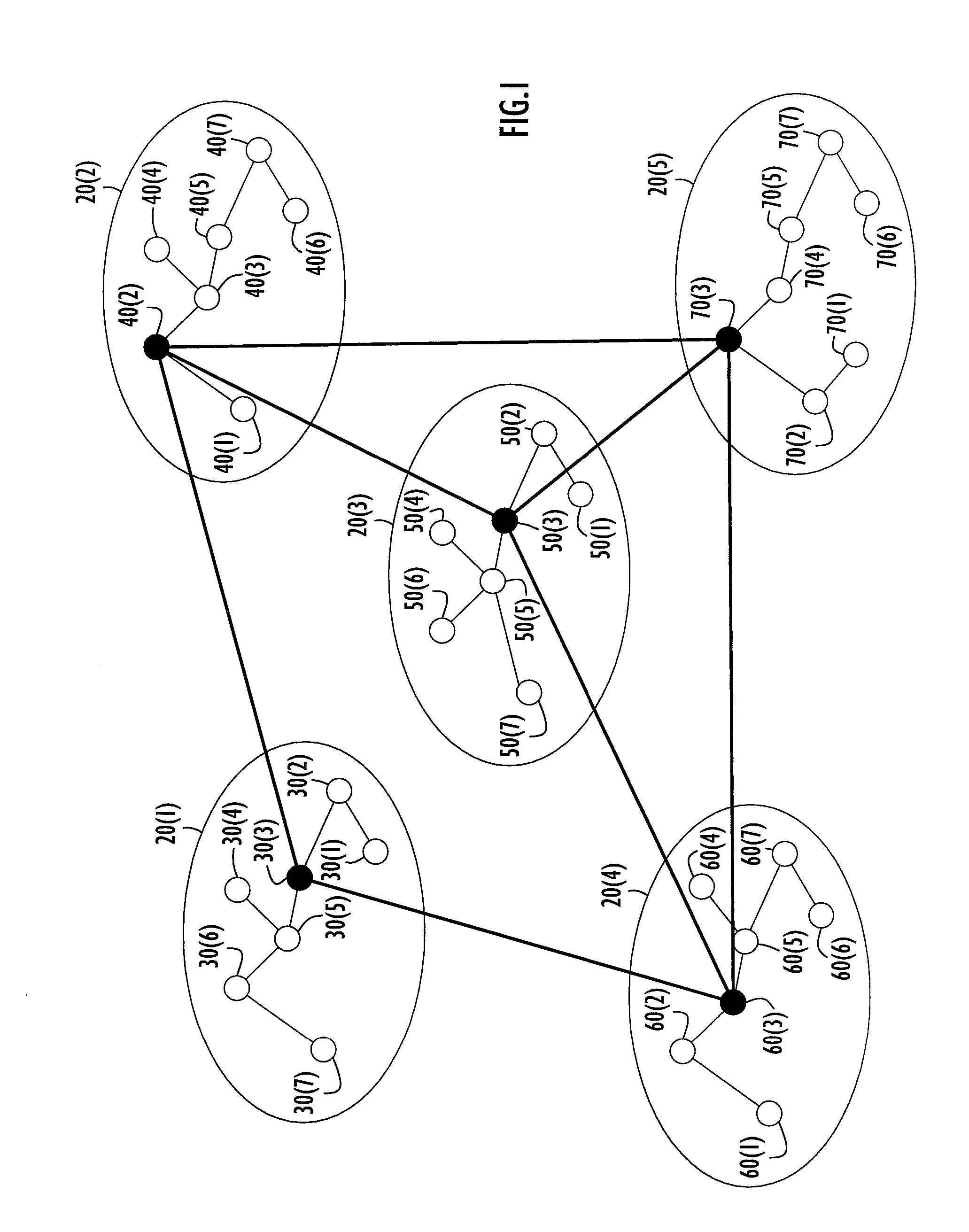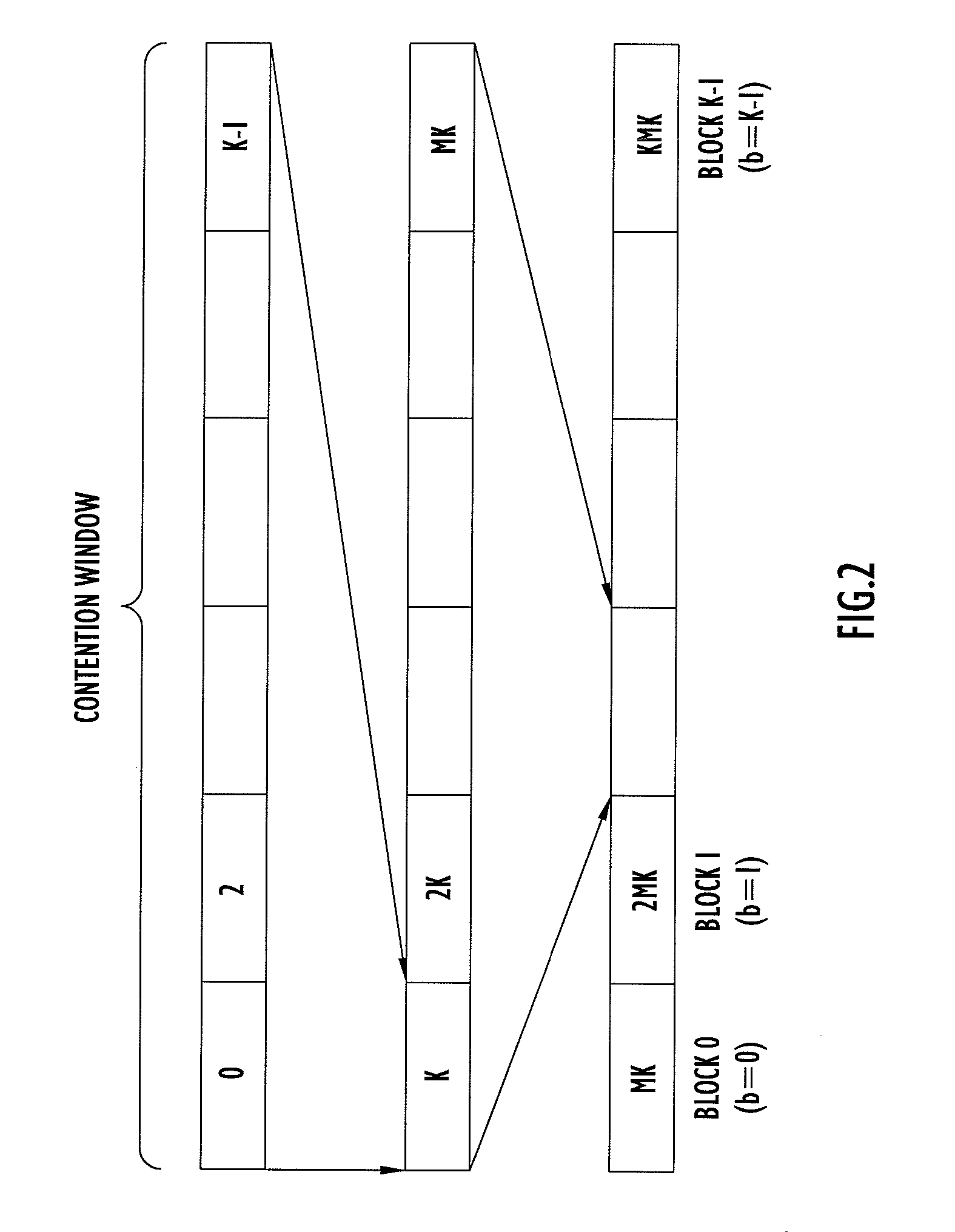Nearly Collision-Free Channel Access System and Method
a channel access system and collision-free technology, applied in the field of adhoc wireless communication networks, can solve problems such as collision-free transmissions, and achieve the effect of reducing the concentration between different nodes
- Summary
- Abstract
- Description
- Claims
- Application Information
AI Technical Summary
Benefits of technology
Problems solved by technology
Method used
Image
Examples
Embodiment Construction
[0022]Reference is made first to FIG. 1 in which a conventional wireless ad-hoc communication network is shown at 10. The network 10 is organized into first and second tiers. The first tier comprises a plurality of so-called “islands”20(1) to 20(5). Each node joins an island and each island has a so-called “island head” indicated by the darker shaded node in an island. For example, island 20(1) comprises a plurality of nodes 30(1) to 30(7), and node 30(3) is the island head for island 20(1). Similarly, island 20(2) comprises nodes 40(1) to 40(7), and 40(2) is the island head. Island 20(3) comprises nodes 50(1) to 50(7) and node 50(3) is the island head. Island 20(4) comprises nodes 60(1) to 60(7) and node 60(3) is the island head. Island 20(5) comprises nodes 70(1) to 70(7) and node 70(3) is the island head. Those nodes affiliated with an island head are also called “island members”. Within an island there is a flat network architecture comprised of multiple hops.
[0023]The island he...
PUM
 Login to View More
Login to View More Abstract
Description
Claims
Application Information
 Login to View More
Login to View More - R&D
- Intellectual Property
- Life Sciences
- Materials
- Tech Scout
- Unparalleled Data Quality
- Higher Quality Content
- 60% Fewer Hallucinations
Browse by: Latest US Patents, China's latest patents, Technical Efficacy Thesaurus, Application Domain, Technology Topic, Popular Technical Reports.
© 2025 PatSnap. All rights reserved.Legal|Privacy policy|Modern Slavery Act Transparency Statement|Sitemap|About US| Contact US: help@patsnap.com



